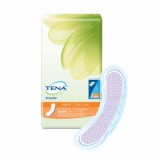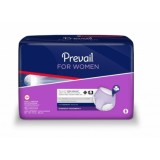Your Cart is Empty

Seeking Help and Getting Treatment
Pelvic Muscle Training
Timed Voiding to Control Incontinence
Self-Help Strategies For Women With Incontinence
Eating Bladder Friendly Foods
What Should I Drink

Seeking Help and Getting Treatment
Despite the fact that women are more likely to experience incontinence than men, fewer than 50% seek medical attention. For those who do, there's good news: about 80% find that their symptoms improve.
A very common treatment method for urinary incontinence is bladder and pelvic floor muscle retraining. Those who stick to the program prescribed by their healthcare providers usually see results within a matter of weeks. Studies have shown that Kegel exercises improve urine control in 40% to 75% of women who perform them regularly.
Timed voiding, a technique where voiding is scheduled in order to prevent accidents, is another treatment approach for UI. Specially designed watches, such as VibraLite and the Malem VibroWatch, help keep you on track by using vibrating or auditory signals at set times to alert you when it's time to go. All of these models look just like normal digital watches, making them a discreet solution, and the fact that they use vibratory alerts adds to your privacy.

Pelvic Muscle Training
Pelvic muscle training improves bladder control by strengthening the muscles of the pelvic floor. These muscles, which can be weakened due to childbirth, hormonal changes, or the natural aging process, support the internal organs that occupy the lower portion of the abdominal cavity (including the bladder, intestines, and uterus). Compromised function of these muscles can result in varying degrees of urinary leakage. This is not an uncommon problem; in fact, over 50% of women experience incontinence at some time in their lives.
Performing pelvic floor exercises (also known as "Kegel exercises") with the help of a pelvic trainer increases the tone and function of these muscles. For example, StepFree Vaginal cones and the Kegel Master are two devices that incorporate progressive resistance to strengthen and tone these muscles. The best part of using a pelvic trainer is the added resistance they provide while you perform the exercises, since these muscles are difficult to sense for individuals with incontinence. A pelvic trainer can be used in the privacy and comfort of your own home, enabling you to develop the muscular support needed to improve bladder control and ultimately put an end to incontinence.

Timed Voiding to Control Incontinence
Behavioral therapy is often used to reduce the frequency of major accidents resulting from poor bladder control. These treatment methods are aimed at improving patients' control over the time, place, and frequency of urination. One such treatment is timed voiding.
Timed voiding involves establishing a schedule for urination and is also referred to as "habit training." This treatment is based on your personal habits and schedule, and the intervals between urination are determined by you and your doctor. A specially programmed timed voiding watch is an effective tool for this method of behavioral training. The watches are available with either sound or vibration alerts that discreetly remind you of your scheduled voiding time, which helps reduce anxiety and an unexpected rush to the restroom.
By following a regular urination schedule and using proper undergarment protection such as a Serenity pad or Poise pads (just in case), you can remain comfortable regardless of your environment or situation and know that you're prepared for anything.

Self-Help Strategies For Women With Incontinence
Women can select any number of products to discreetly protect themselves from accidents and manage urine flow. Absorbent products like female incontinence pads, bladder control pads, liners, and more are simple solutions for female incontinence. In addition to protective undergarments, there are other steps that women can take to manage incontinence. Always check with your healthcare provider before making any diet or exercise changes.

Eating Bladder Friendly Foods
Some foods or fluids can actually irritate the lining of the bladder. Since each person is different, finding out how some foods affect you may take a little detective work. The easiest way to pinpoint certain foods' affect is to do an elimination diet. This means that you start by eliminating the potentially irritating foods, and then gradually re-introduce them, as you pay attention to your body's bladder signals. Having to urinate more frequently, more urgently or get up more frequently at night may be signals that your bladder is being irritated by that particular food or fluid.
Potential Bladder Irritants
You can begin to re-introduce foods by adding what you miss most. Sometimes limiting the quantity of that food or diluting it with water can make a difference.

What Should I Drink
It is important to stay hydrated, even when incontinence, leaking and going to the bathroom frequently are a problem. Many people mistakenly limit water and fluids, thinking that they won't have to urinate as frequently. In actuality, this can worsen the problem. Concentrated urine can actually make the bladder more irritable.
Try to drink 6-8, 8 ounce glasses of water or fluid a day. Carrying a water bottle and drinking throughout the day is preferable to drinking all at once. Herbal tea without citrus instead of coffee or regular tea is a good choice. Juicy fruits such as watermelon, pears, blueberries, as well as bananas, figs and raisins are well tolerated.